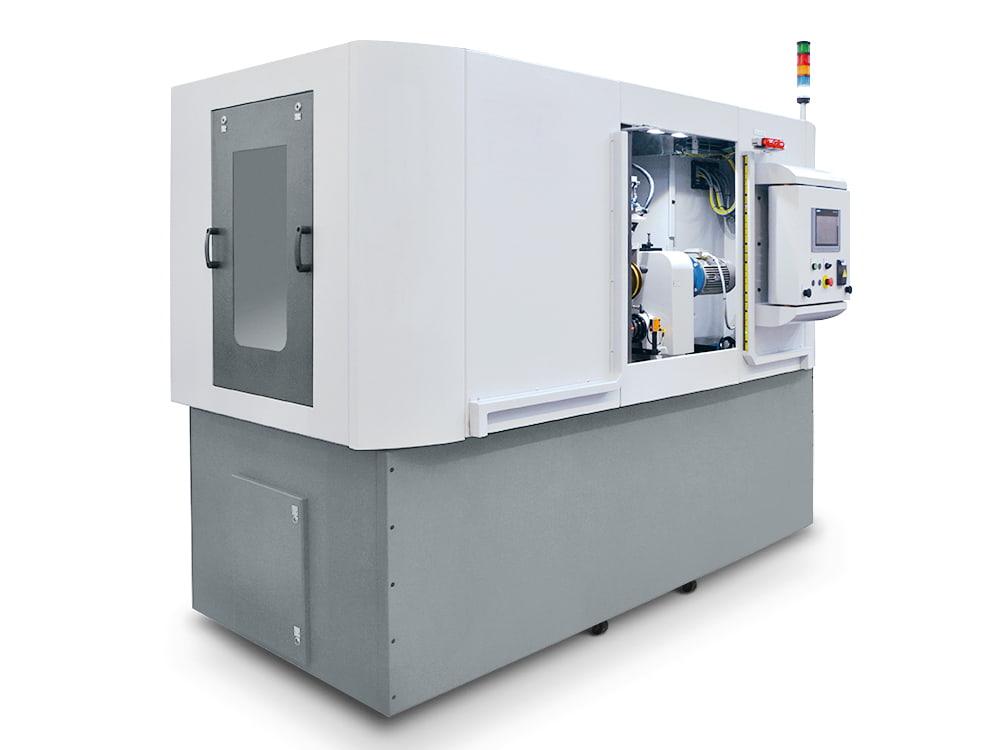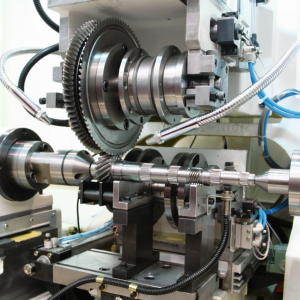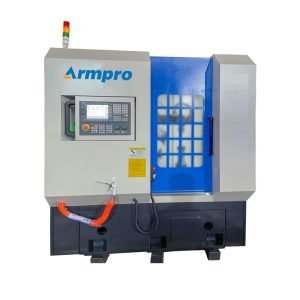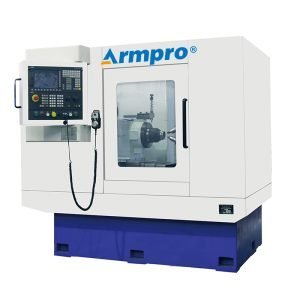The Future of CNC Gear Chamfering: Exploring Recent Automation Technology Breakthroughs
Introduction
CNC Gear Chamfering is a method of finishing the edges of gears, where edges are carefully cut to ensure that gears will run quietly and prevent premature wear. In automobile and aircraft CNC industries which are very sensitive, chamfering helps to improve the functionality of the gears through the reduction of stress concentration and ease of assembling.
The goal of this article is to discuss advances made in recent years in the automation of gear chamfering using CNC equipment. New technologies are emerging in the blink of an eyelid, and to be competitive in high-tech CNC industries requires manufacturers to be up to date with the new technologies available.
1. Understanding CNC Gear Chamfering
Traditional vs. Automated Chamfering
Traditional Manual Chamfering
- Labor-Intensive Process: Expect operators to manually bevel the edges of gears with hand tools or with minimum mechanical power, which proves to be costly for efficient utilization of labor.
- Time-Consuming: The time taken to chamfer each gear is relatively long because the process is done manually, especially if one is producing a large batch of gears.
- Inconsistent Precision: Chamfering precisionis controlled by the operator’s proficiency thus resulting in unreliable gears.
Automated CNC Chamfering
- High Precision and Consistency: cnc machine industrial provide means for proportional, unvarying, and highly accurate chamfering of each gear in a particular batch despite the size of the batch.
- Faster Production: CNC automation accelerates the process, and is thus perfectly suitable for massive production where lead times are relatively short.
- Reduced Labor Dependence: Automationrelieves many operational costs to human beings making it reduce the cost of operation while increasing efficiency.
Limitations of Manual Chamfering
- Inconsistent Quality: It is challenging to maintain a constant chamfering for equal batches that are processed simultaneously.
- Slower Throughput: The pace of production cannot exceed the capacity of the operator who is executing the manufacturing.
- Higher Labor Costs: Needs more labor that is human which considerably raises the cost of production.
Advantages of Automated CNC Chamfering
- Precision and Repeatability: Provides Chamfer dimensionsas per the required measurement for each gear, thus keeping the quality standard at par.
- Faster Turnaround: CNC chamferingcan easily chamfer through large-scale production and may take a shorter time to process hence higher production rates.
- Cost-Effective: They require initial capital to establish the system but operating costs are lower since fewer human interferences and higher productivity are expected.
2. Recent Breakthroughs in Automation Technology
Robotic Integration
- Robotic Arms in CNC Gear Chamfering:
CNC gear chamfering machines are becoming fitted with robotic arms for handling gears, unloading them, and CHAMFERING them. It results in short product cycles and less use of manual labor such that the process is automatically prompted.
- Automated Tool Changers for Efficiency:
Robotic systems are usually coupled with ATC or automated tool changers, which can afford to interchange between various chamfering tools in agreement with the design and the specifications of the gear. This increases accuracy and reduces the time lost to breaks thus keeping production going and fast.
Advanced Software Solutions
- CAM Software for Process Optimization:
High-level CAM technology has a significant function in simplifying CNC gear chamfering operations. Chamfering can be simulated by these software solutions to provide the best tool path for Increased speed of the manufacturing process.
- Real-Time Monitoring and Control Systems:
Modern CNC systems come with closed-loop systems that monitor the processing environment and adjust the machining parameters in response to feedback signals.
This capability can accommodate automatic correction whenever there is a deviation which ensures that the vehicle chamfering is precise irrespective of the number of cars produced.
Adaptive Machining Technologies
- Adaptive Machining in CNC Chamfering:
High-speed and precision machining technologies make it possible for cnc machine industrial to variably control chamfering speed, depth, and chamfering angle. These systems adapt to the state of the material and the wear of the cutting tool while ensuring proper machining conditions do not require the operator’s actions.
- Closed-Loop Control and cnc machine industrial Learning:
In closed-loop control systems, feedback is exercised and feedback loops are used to observe or to control the machining process whereas the advanced machining strategies are recommended by the machine learning algorithms on observed historical data.
Collaborative Robots (Cobots)
- Cobots in CNC Gear Chamfering:
Cobots are more commonly being utilized in the handling of CNC gear chamfering functions.
While cnc industrial robots are large stand-alone manipulator arm systems typically used to improve efficiency by taking over repetitive and dangerous tasks, cobots are small robotic devices intended to work in direct collaboration with people together with their equipment, such as to position tools, gears or to help in quality checks.
- Safety and Flexibility of Cobots:
Known to incorporate enhanced safety features such as force sensors that do not allow interaction between robots and humans or objects, Co-bots are suitable for working environments that demand humans and robots to share the same workstation.
They can access nearly any job where their versatile construction and slim dimensions are beneficial in low-quantity as well as mass manufacturing.
3. Implementing Automation in CNC Gear Chamfering
Assessment and Planning
- Guidelines for Assessing Current Chamfering Processes:
Its implementation should be commensurate with the elaborate analysis of current chamfering practices. Compare the time taken in cycles, the output quantities per period, and the rates of returns to discover areas of congestion and low productivity.
It is possible to use data analytics tools to collect information on the operational performance and the key areas that might be interesting to automate as well, for instance, the handling, tool changes, or other cycles associated with a specific procedure or inspection.
- Importance of Planning and Selecting the Right Automation Technologies:
The management should develop a clear framework for their approach when it comes to automation. Some of the effective internal factors include; The scale of production, the type of machinery currently in use, and the types of automation technologies extant in the company like robotic arms, automated tool changers, and CAM software.
Training and Skill Development
- Need for Training Operators and Technicians:
With the increasing use of automation systems, it is crucial to educate operators as well as technicians for efficient management and operation of the systems. Develop extensive courses that will handle the use of cnc machine industrial, robotic technology, and specific software systems.
- Strategies for Continuous Skill Development:
Stimulate the oil and gas cnc industry to embrace a knowledge management culture given new technologies. Conduct weekly seminars, webinars, and courses for automation and robotics certification. It is necessary to establish cooperation with schools or training centers to get access to effective training.
Maintenance and Upkeep
- Importance of Regular Maintenance and Monitoring:
The only way to guarantee high efficiency of the use of automated systems is to perform maintenance and monitoring constantly. The maintenance schedule of the robotic system should be made where the mechanical wear is checked, the need for updating the software is checked, and where the sensors are calibrated.
- Tips for Maintaining Robotic Systems, Software, and Sensors:
- Software: Upgrade the software systemsyou use to take advantage of recent modifications, branch out to more secure systems, or attain better performance. Running instructions are to back up data from time to time to avoid loss and to be able to restore the information in the shortest possible period.
- Sensors: Sensors should also be regularly checked and calibrated to assure precision in the measures detected and fed back. In every case of a faulty sensor, it should be replaced to avoid the effects on the chamfering process.
4. Future Trends in CNC Gear Chamfering Automation
Industry Adoption Trends
- Increased Automation Integration: CNC Gear chamferingis also expected to see greater implementation of automation technology including the use of robotic arms and advanced cnc machine industrial as manufacturers seek to cut on costs that are associated with labor.
- Smart Manufacturing Transition: cnc Industry 4.0 will necessitate IoT technologies for real-time information exchange, and predictive rather than preventive maintenance, resulting in beneficial improvements in the manufacturing system performance.
Impact on Gear Manufacturing and the Broader cnc Industry
- Faster Time to Market: High levels of integration of production processes will lower production cycle times thus giving manufacturers the flexibility of meeting market requirements.
- Sustainability Initiatives: Future automation will focus on how to minimize the use of resources, and minimize wastage, and energy consumption in production.
Conclusion
In conclusion, automation advancements in CNC gear chamfering over the past several years that involve the incorporation of robots and adaptive machining are further improving precision and efficiency while reducing costs extensively in automobile as well as aerospace CNC industries.
They actualize the service quality in addition to the product quality as well as facilitate the production procedures. To sustain competitiveness, manufacturers need to continue learning about the current advancements in automation and incorporate them into their operations ready to meet these new challenges.
Don't forget to share this post!
Related Products
CONTACT US
Tell us your raw material and working details to get quotations within 24 hours.
WhatsApp Us: +86 159 27 555863

Want the best price & newest metal working machinery buying guide,tips and trends sent straightly to your box?Sign up for Armpro's monthly newsletter,we're free for your consultation and Offer you the most suitable working solutions!
The Buyer's Guide
- Tapping Machine: The Ultimate Buying Guide in 2024
- Electric Tapping Machines:the Ultimate Buying Guide in 2024
- Drilling Machine: The Ultimate Buying Guide in 2024
- Drilling milling Machine:The Ultimate Buying Guide in 2024
- CNC Tapping Machine :The Complete Buying Guide in 2024
- Pipe chafering Machine:The Complete Importing Guide in 2024
- Radial drilling Machine:The Complete Buying Guide in 2024
- Thread rolling Machine:The Complete Buying Guide In 2024
- Pillar Drilling Machine:The Ultimate Buying Guide in 2024










